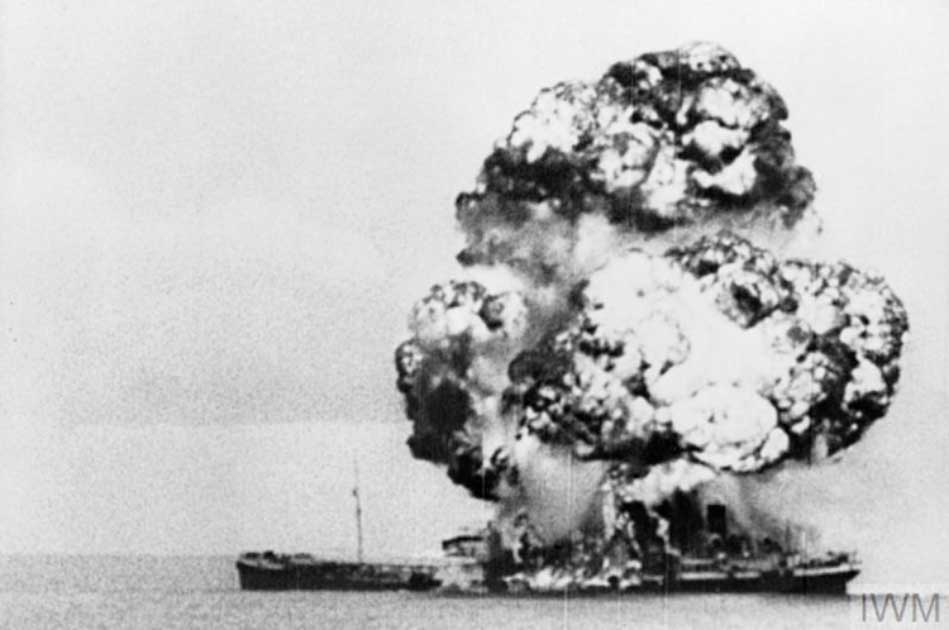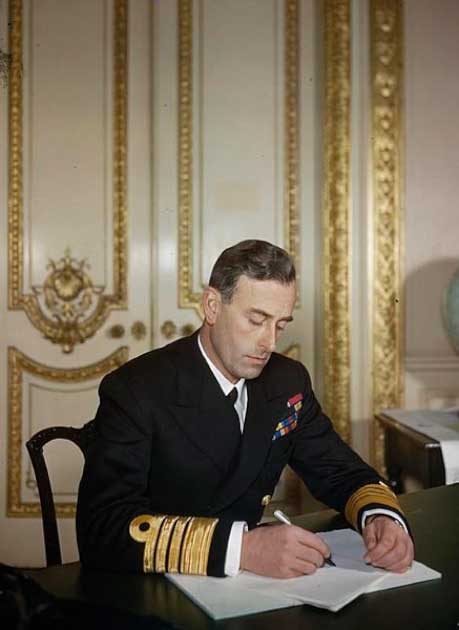War is a white-hot crucible for inventiveness. With the need to gain an advantage over your enemy in the here and now, ingenious inventions and schemes are driven into action where the importance of immediacy and surprise is valued over lasting effectiveness or conventional wisdom.
This is why WWI saw the Paris gun, a massive cannon mounted on a train that fired from so far away that when the first shells fell from a silent sky the French thought it was a gas explosion, or an earthquake. This was why the Nazis built a spherical tank, and the Soviets in the Cold War toyed with massive ground effect aircraft.
In World War II, innovations sprung up across land, sea and air. However, sometimes the ideas tip over into ridiculousness, and perhaps the British had gone too far made with their plan to use icebergs against the Germans. It would have the element of surprise, that is certain.
When the idea to use an iceberg aircraft carrier was first introduced, some laughed at it while others showed utter shock, but it certainly started a buzz in the halls of power. Even though the proposal titled “Habakkuk” never came into reality, it shows the lengths to which opposing sides will go, and the creativity in such inventions, to win.
Iceberg Bases
The idea to use icebergs in World War II was the brainchild of Geoffrey Pyke, a colorful character who was part inventor, part war reporter, part spy. In 1942 the idea first came to his mind, but in his defense he did see some of the problems.

Firstly, there was a possibility for him to get immediately sacked from his role at the British Foreign Office for the suggestion, and secondly, even if his reputation survived many people were likely to find the idea funny, and thus they would not take it seriously. But Pyke was serious about applying the concept of the iceberg aircraft so that the Battle of the Atlantic could be won using ice.
The proposal was made because the Battle of the Atlantic had led to severe damage to the Allied war effort, with an astounding 652,487 tons of Allied shipping sunk by German U-boats. Gaining control of the Atlantic and allowing supplies to reach Europe was essential, and without it the Allies were doomed.
The desperation of the Allies had intensified owing to limited air cover: once the German naval vessels were found they were often beyond the range of bomber strikes. In this most desperate hour, Pyke presented the idea of the iceberg aircraft carrier, which sounded nothing less than a fairytale.
- The Nazi V-3 Cannon: Could this “Vengeance” Weapon Have Destroyed London?
- Sending a Message: What was MI6 Doing With All That Semen?
In the theoretical context, the berg-ship idea seemed to be highly promising, and would circumvent many of the problems associated with traditional aircraft carriers. Such carriers were very expensive, took years to build and outfit, could only operate with certain aircraft, and ran the risk of being sunk by Nazi attacks.
The fundamental idea was to create iceberg aircraft carriers that would be quickly available, cheap to outfit, and nigh unsinkable. Furthermore, each iceberg aircraft carrier would have the capacity to carry far larger bombers, and far more of them.
But, most tellingly, these weaponized icebergs would carry the element of surprise. By the time the Nazis realized what had happened, the Allies would have control of the Atlantic and virtually nothing could be done to win it back for Germany.
The weapons that were in use for sinking ships would have negligible impact on such carrier. The ingenious idea went from ridiculous to plausible, as it seemed to remove all the weaknesses of carrier warfare and introduce significant advantages.
Iceberg aircraft carriers would be capable of drifting harmlessly past magnetic mines, and attacks by torpedoes would not sink them. The Allies could then operate large bomber wings from such bases with impunity.
A Good Idea, Then?
The proposal that Pyke put forward was unique and extraordinarily inventive. While thinking of the iceberg aircraft carrier idea, he had disregarded conventional thinking and focused solely in achieving the Allied goals in the Atlantic.
But it wasn’t exactly perfect. Icebergs are not known for their maneuverability, and would require constant resupply as they could not return to port. There were also cold weather adaptations required to operate bomber fleets from such bases, both in logistics on the ground and changes to the aircraft themselves.
Initially, the iceberg aircraft carrier theory was likely to seem funny to the Germans. However, soon they would be deceived when they would realize its vital role in the war. It was hoped that the bomber attacks would destroy German naval morale, and the Allies would use this weakness to beat them in the Battle of the Atlantic.
Many considered the use of the iceberg in WWII bizarre because it seemed impractical and illogical. Firstly, the concept would require application of the latest in military innovation, many of which were still in a nascent stage.
Moreover, the Allies were not planning on simply commandeering existing icebergs in the Atlantic. Project Habakkuk involved creating all new aircraft carriers, made of ice reinforced with wood fibers, a material Pyke dubbed “pykrete”.

Just to build such a frame would present a major challenge. The proposal’s complexity was not helped by Pyke’s unshakeable belief that the iceberg aircraft carrier would be made quickly using affordable materials. It seems that he did not fully appreciate the complexity of such a project.
The document that Pyke had sent to Chief of Combined Operations Lord Mountbatten summarizing his idea also gives a glimpse into its outlandishness. The berg-ship would be created using reinforced ice. Its enormous size would help to accommodate modern bombers and fighters.
This vessel, far larger than anything else out there, would be unsinkable as the attacker would have to break the vessel into tens and hundreds of pieces that would themselves float. Moreover, the attack would have to be executed in a sustained fashion or the original damage could be quickly repaired.
On paper, the idea seemed to be promising, and Mountbatten encouraged such ideas. Why then was it not built?
Unsurprisingly, Pyke had not bothered to think through all the practicalities and the idea involving iceberg aircraft carriers did not witness the light of the day. The project was abandoned midway through development because of high costs and complex requirements.
The underlying factor was the impractical foundation on which the idea was based. Even though the plan was not a success, it succeeded in gaining considerable attention owing to its bizarreness.
Could it have worked? We will never know.
Top Image: Could WWII have been won with enormous aircraft carriers made of icebergs? Source: Unknown Author / Public Domain.
By Bipin Dimri